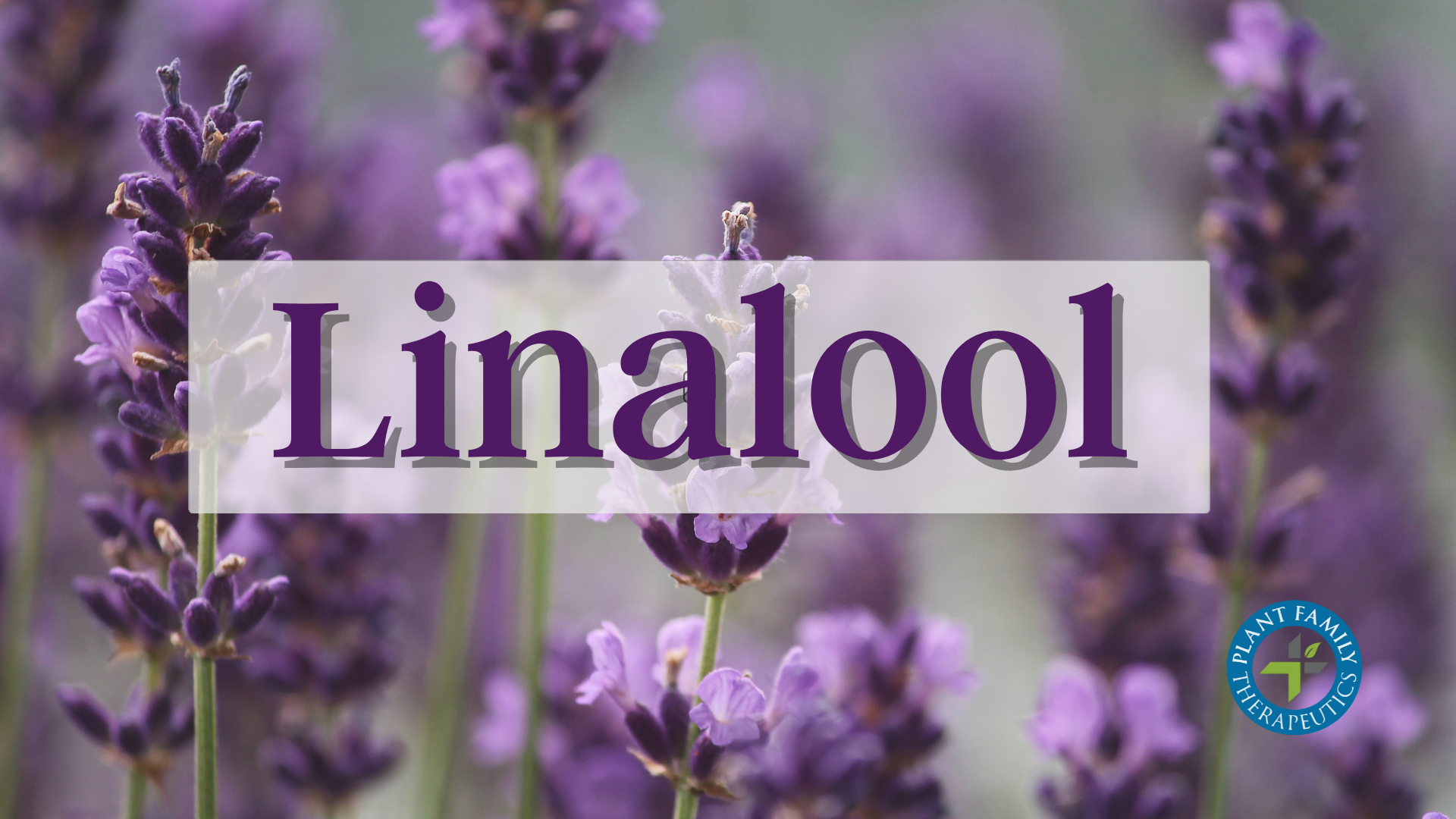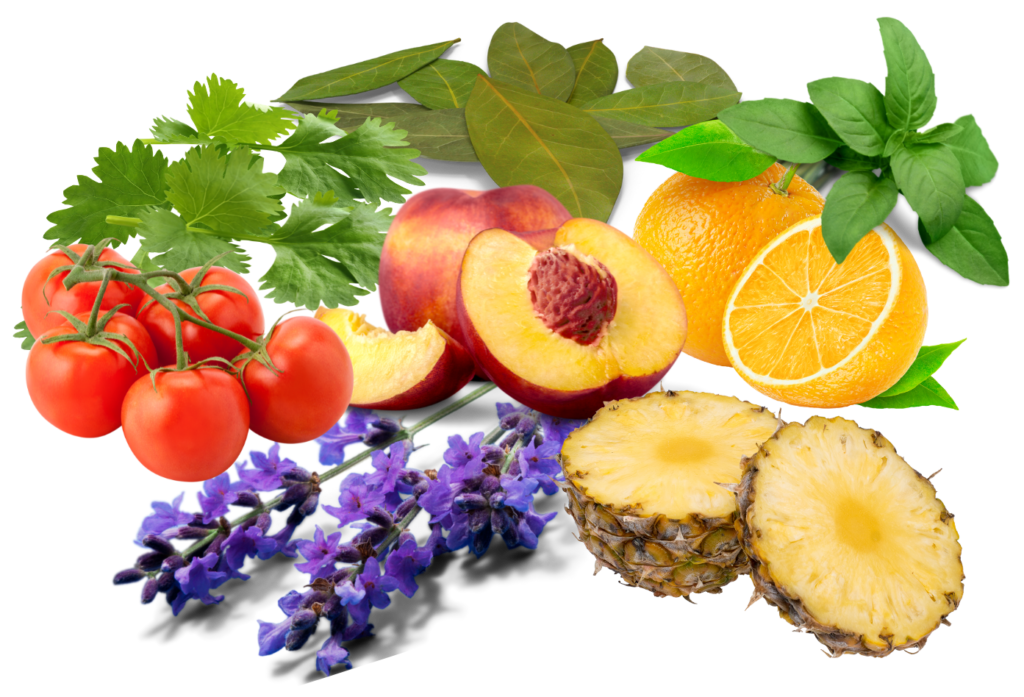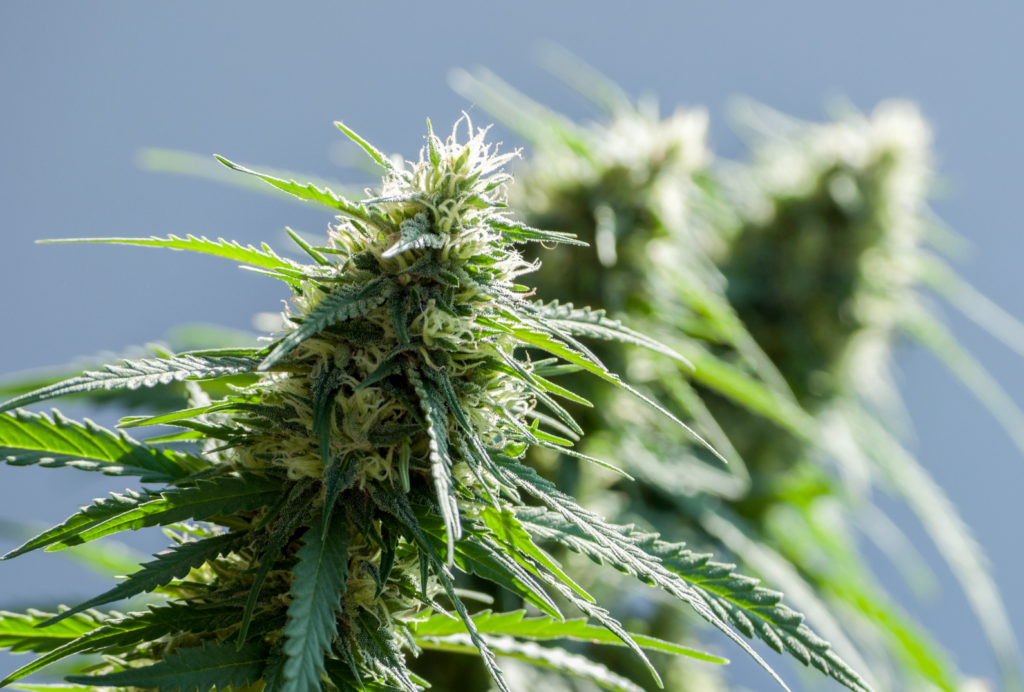This website requires you to be 21 years or older to enter. Please confirm your age below to continue.

Lavender essential oil has been a prominent and important part of history, bringing clarity, peace of mind, emotional balance as well as healing and overall wellness to the body.
In the last Terpene segment, I discussed the refreshing and uplifting scent of Limonene. Here you learn about Linalool and how it is more than just anxiety relief.
The History
When you hear the word “lavender,” you might immediately think of a lighter shade of purple. But there’s more to this herb than its color. Lavender is a flowering plant in the mint or Lamiaceae family that’s easily identified by its sweet floral scent. The botanical name for lavender is ‘Lavandula’. The genus name stems from Latin ‘lavandus’, meaning to be washed, or ‘lavare’, to wash.
Lavender has been used throughout the centuries and it is believed to be native to the Mediterranean, the Middle East, and India, with a history dating as far back as 2,500 years. In ancient times, lavender was used as a holy herb and additionally, it was often used to freshen up and give a light scent to a variety of personal items, such as clothes and hair.
Ancient Romans were known to have used lavender oil to perfume baths and linens. Their soldiers dressed the injured men’s wounds with lavender oil in order to soothe burns and stimulate the growth of skin cells.
In the Middle Ages, lavender was used in aromatherapies, aiding in things such as grief, fatigue, faintness, and helping with relaxation and sleep. Lavender was used throughout this time as an insect repellent, for sunburns, and as a skin healing aid. It was even thought to help ward off evil spirits. Lavender was used in culinary delicacies, for internal herbal remedies, and also used to treat acne, earaches, aching muscles, depression, eczema, stress, psoriasis, and tension headaches.
Today, research has identified several benefits from this versatile and amazing plant.
Linalool and its awesome benefits
The terpene in lavender, or the aroma, is called Linalool (lin-uh-lol) and is found in over two hundred plants and fruits worldwide. This delicate, warm floral sent can be found in almost everything including chewing gum, cosmetics, soaps, perfumes, and essential oils.
Linalool can be broken down into two stereoisomers: (R)-(-)-linalool (or licareol) and (S)-(+)-linalool (or coriandrol). They have identical properties like boiling point, density, refractive index and solubility. Chemically they have the same reactions, just different smells. (R)-(-)-linalool generally has a woody lavender sent while (S)-(+)-linalool has a more floral sweet aroma.
While Linalool is known for its calming effect and ability to bring elevated stress levels to almost normal conditions, it can do so much more.
Linalool can be ingested and is labeled as GRAS (generally recognized as safe) by the FDA. Here is a small list of where Linalool can be found – coriander, basil, oregano, marjoram, grape seed, camellia (tea plant), bay leaves, tomato, and of course, lavender. Also, in fruits like guava, peaches, plums, pineapple, and passionfruit.

Some of the researched benefits of ingesting linalool include:
Anticarcinogenic: demonstrated anticancer activity in humans, specifically in adenocarcinoma cells, melanoma cells, and lymphoma cells.
Antioxidative: protects cells and enhances the concentration of first-line defense of superoxide dismutase, and glutation peroxidase (GSH-Px).
Antidiabetic: stimulated glucose utilization, suppressed glucosidase and amylase activity, decreases atherosclerotic index, and enhanced the cardio-protective index. Improves renal function.
Cholesterol: helps reduces plasma cholesterol levels, lowers lipid levels.
Antimicrobial: demonstrated antifungal and antibacterial activity against many invaders including, Helicobacter pylori, Streptococcus, Staphylococcus aureus, E.coli, and Pseudomonas aeruginosa.
Pain: demonstrates strong anti-inflammatory and antinociceptive (block pain activity).
Linalool and the Entourage Effect bring together more benefits
Dr. Ethan Russo, a pioneer in cannabis research, published the study “Taming THC: Potential Cannabis Synergy and Phytocannabinoid-terpenoid Entourage Effects”, which demonstrated how cannabinoids and terpenes associate in the human body, effects one another, and create a different or “greater,” efficacy based on the molecules present and the ratios.
The study revealed that the interaction of the terpenes linalool, limonene, and the cannabinoid cannabigerol (CBG), helps treat MRSA (methicillin-resistant staphylococcus aureus), the most treatment-resistant form of staph infection.
CBD, limonene, and linalool’s interaction can fight acne and treat other skin conditions, such as eczema and psoriasis. The combination of THC, cannabinol (CBN), and linalool can enhance sedative effects.

While linalool can provide a wide range of benefits for patients, it is notably recognized for its efficacy in relaxation and anxiety control. In fact, it can be used as a sedative (sleep aid) for sleeping disorders. Linalool’s sedative effects are significant enough to equal a tranquilizer.
In addition, linalool also serves as an antidepressant, analgesic (pain blocker), anticonvulsant, and anti-inflammatory, making it ideal for conditions ranging from clinical depression, anxiety, arthritis, Dravet Syndrome, dystonia (a movement disorder), epilepsy, and fibromyalgia.
Other studies suggest that linalool reverses neuropathological and behavioral impairments, demonstrating improved learning and memory of Alzheimer’s Disease and restores cognitive and emotional functions by its anti-inflammatory effects. Thus, linalool may be a candidate for the treatment of Alzheimer’s.
Refresh and relax
There is no denying that linalool offers a wide array of benefits. Here is a cool and refreshing way to enjoy those benefits. So, sit back and enjoy the summer with this great tasting Lavender Lemonade recipe.
References
Chiang, L., Chiang, W., Chang, M-Y., Ng, L-T.,& Lin C-C.(2003). Antileukemic activity of selected natural products in Taiwan. Am J Chin Med.31(01):37–46. https://doi.org/10.1142/S0192415X03000825
Deepa, B., & Anuradha, C.V. (2013). Effects of linalool on inflammation, matrix accumulation and podocyte loss in kidney of streptozotocin-induced diabetic rats. Toxicology Mechanisms and Methods, 23, 223 – 234. https://doi.org/10.3109/15376516.2012.743638
Duman, A.,Telci, I., Dayisoylu, K., Digrak, M, Demirtas, I., & Alma, M. (2010). Evaluation of bioactivity in linalool-rich essential oils from Ocimun Basilucum and Coriandrum sativum varieties. NCP, 5(6):969-974 https://journals.sagepub.com/doi/pdf/10.1177/1934578X1000500634
Deepa, B., & Anuradha, C. (2011). Linalool, a plant derived monoterpene alcohol, rescues kidney from diabetes-induced nephropathic changes via blood glucose reduction. Chemistry. ID: 53138838
Elisabetsky, E., Brum, L. F., & Souza, D. O. (1999). Anticonvulsant properties of linalool in glutamate-related seizure models. Phytomedicine : international journal of phytotherapy and phytopharmacology, 6(2), 107–113. https://doi.org/10.1016/s0944-7113(99)80044-0
Guzman, M., Rossi,M., Karnischky, L., et al. (2005). The sesquiterpene lactone parthenolide induces apoptosis of human acute myelogenous leukemia stem and progenitor cells. Blood. 105(11):4163–4169. https://doi.org/10.1182/blood-2004-10-4135
Herman, A., Tambor, K., & Herman, A. (2016). Linalool Affects the Antimicrobial Efficacy of Essential Oils. Current microbiology, 72(2), 165–172. https://doi.org/10.1007/s00284-015-0933-4
Jabi,r MS., Taha, AA., Sahib, UI., Taqi, ZJ., Al-Shammari, AM.,& Salman, AS.(2019). Novel of nano delivery system for Linalool loaded on gold nanoparticles conjugated with CALNN peptide for application in drug uptake and induction of cell death on breast cancer cell line. Materials Science and Engineering.2019(94):949-964 https://doi.org/10.1016/j.msec.2018.10.014
Koulivand, P. H., Khaleghi Ghadiri, M., & Gorji, A. (2013). Lavender and the nervous system. Evidence-based complementary and alternative medicine : eCAM, 2013, 681304. https://doi.org/10.1155/2013/681304
Lewinsohn, E., Schalechet, F., Wilkinson, J., Matsui, K., Tadmor, Y., Nam, K. H., Amar, O., Lastochkin, E., Larkov, O., Ravid, U., Hiatt, W., Gepstein, S., & Pichersky, E. (2001). Enhanced levels of the aroma and flavor compound S-linalool by metabolic engineering of the terpenoid pathway in tomato fruits. Plant physiology, 127(3), 1256–1265. https://www.ncbi.nlm.nih.gov/pmc/articles/PMC129293/
Linck, V. M., da Silva, A. L., Figueiró, M., Piato, A. L., Herrmann, A. P., Dupont Birck, F., Caramão, E. B., Nunes, D. S., Moreno, P. R., & Elisabetsky, E. (2009). Inhaled linalool-induced sedation in mice. Phytomedicine : international journal of phytotherapy and phytopharmacology, 16(4), 303–307. https://doi.org/10.1016/j.phymed.2008.08.001
Nakamura, A., Fujiwara, S., Matsumoto, I., & Abe, K. (2009). Stress repression in restrained rats by (R)-(-)-linalool inhalation and gene expression profiling of their whole blood cells. Journal of agricultural and food chemistry, 57(12), 5480–5485. https://doi.org/10.1021/jf900420g
Park, S. N., Lim, Y. K., Freire, M. O., Cho, E., Jin, D., & Kook, J. K. (2012). Antimicrobial effect of linalool and α-terpineol against periodontopathic and cariogenic bacteria. Anaerobe, 18(3), 369–372. https://doi.org/10.1016/j.anaerobe.2012.04.001
Pattnaik, S., Subramanyam, V. R., Bapaji, M., & Kole, C. R. (1997). Antibacterial and antifungal activity of aromatic constituents of essential oils. Microbios, 89(358), 39–46. https://pubmed.ncbi.nlm.nih.gov/9218354/
Peana, A. T., D’Aquila, P. S., Panin, F., Serra, G., Pippia, P., & Moretti, M. D. (2002). Anti-inflammatory activity of linalool and linalyl acetate constituents of essential oils. Phytomedicine : international journal of phytotherapy and phytopharmacology, 9(8), 721–726. https://doi.org/10.1078/094471102321621322
Re, L., Barocci, S., Sonnino, S., Mencarelli, A., Vivani, C., Paolucci, G., Scarpantonio, A., Rinaldi, L., & Mosca, E. (2000). Linalool modifies the nicotinic receptor-ion channel kinetics at the mouse neuromuscular junction. Pharmacological research, 42(2), 177–182. https://doi.org/10.1006/phrs.2000.0671
Rodenak-Kladniew, B., Castro, A., Stärkel, P., De Saeger, C., de Bravo, MG., & Crespo, R.(2018). Linalool induces cell cycle arrest and apoptosis in HepG2 cells through oxidative stress generation and modulation of Ras/MAPK and Akt/mTOR pathways. Life Sci. 2018;199:48–59. https://doi.org/10.1016/j.lfs.2018.03.006
Russo E. B. (2011). Taming THC: potential cannabis synergy and phytocannabinoid-terpenoid entourage effects. British journal of pharmacology, 163(7), 1344–1364. https://doi.org/10.1111/j.1476-5381.2011.01238.x
Russo, E. B., & Marcu, J. (2017). Cannabis Pharmacology: The Usual Suspects and a Few Promising Leads. Advances in pharmacology (San Diego, Calif.), 80, 67–134. https://doi.org/10.1016/bs.apha.2017.03.004
Sabogal-Guáqueta, A. M., Osorio, E., & Cardona-Gómez, G. P. (2016). Linalool reverses neuropathological and behavioral impairments in old triple transgenic Alzheimer’s mice. Neuropharmacology, 102, 111–120. https://doi.org/10.1016/j.neuropharm.2015.11.002
Takeda, A., Watanuki, E., & Koyama, S. (2017). Effects of Inhalation Aromatherapy on Symptoms of Sleep Disturbance in the Elderly with Dementia. Evidence-based complementary and alternative medicine : eCAM, 2017, 1902807. https://doi.org/10.1155/2017/1902807
Tovar, C., Rosinski, J., Filipovic, Z., et al. (2006). Small-molecule MDM2 antagonists reveal aberrant p53 signaling in cancer: implications for therapy. Proc Natl Acad Sci.103(6):1888–1893. https://doi.org/10.1073/pnas.0507493103